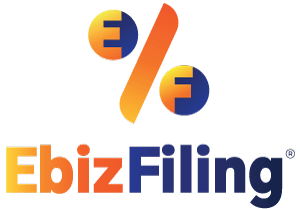
-
April 22, 2022
“What is Form 3CD?”, “What is Form 3CB?” And Process to Access & Submit Form 3CD and 3CB
Table of Content
Introduction
Forms 3CB and 3CD are reporting formats that an auditor should use while auditing the books of accounts of taxpayers who are subject to tax audits. The Income Tax Act’s requirements governing a tax audit require a Chartered Accountant to submit an audit report in a specific format. This page provides a brief overview of Forms 3CB and 3CD, which were created to establish a standardized audit report reporting format for audits undertaken to meet Section 44AB requirements. This article focuses on “What is Form 3CD?”, “What is Form 3CB?”, And the difference between Form 3CD and 3CB.
What is Form 3CD?
Form 3CD is a statement of particulars that must be filed with Form 3CA/3B, as appropriate, in compliance with Rule 6G and Section 44AB.
-
In total, there are 41 clauses in Form 3CD (split into Part A and Part B) that contain disclosures on deductions, loans, and TDS (Tax Deducted at Source) paid, among other things.
-
Finally, the Form specifies the auditor’s address, name, membership number, FRN (Firm Registration Number), and signature with stamp/seal.
What is Form 3CB?
This form is required when a taxpayer who works as a professional or runs a business does not have to have their books audited by the IT (Income Tax) Department. Apart from the Income Tax Act, no audit of books of account is required when an individual, partnership firm, or proprietorship entity has a turnover of over INR 1 crore and has not opted for the presumptive taxation scheme. They must submit Form 3CB in order to do so. The tax auditor can also provide Form 3CD in addition to Form 3CB.
Information on Tax Audit Form 3CD
Two types of Tax Audit Forms are Statement of Particulars and Audit Report, that is been explained below:
-
Statement of Particulars
Form 3CD would be used for the statement of particulars. This form contains 44 clauses in which the auditor must report on the various topics covered. These clauses are separated into two parts: Part A covers basic factual information about the assessee, and Part B comprises information about various income tax compliances that must be provided.
-
Audit Report
The audit report will be in either Form 3CA or Form 3CB format. Form 3CA is for people whose accounts have been audited under legislation other than the Internal Revenue Code. Form 3CB is for people who have not had their accounts audited under any other law. As a result, we can claim that this is for those who are being audited under the Income Tax Act.
Elements of Form 3CB
Section 44AB requires the chartered accountant to specify the following elements in the forms after conducting the audit:
-
Information about the taxpayer’s personal life.
-
Audit findings and comments, including any errors or inconsistencies.
-
A statement of accounting, such as the Balance Sheet, Profit and Loss Account, and Income and Expenditure Statement, that are in conformity with the books of accounts kept at the entity’s head office.
-
A statement that the information provided is a fair and accurate representation of the balance sheet and other features of the organisation.
-
Form 3CB includes a declaration that the details stated in the audited report are included.
-
The balance sheet, profit and loss account, or revenue and expenditure account, have all been checked, according to the chartered account declarations.
-
A certificate from a chartered accountant attesting to the correct upkeep of the books of accounts.
-
Form 3CD annexure.
-
The chartered accountant’s address, name, and signature.
Elements of Form 3CD
There are two components to Form 3CD. The following is a list of its components, which are fairly extensive:
-
Part One contains the below Information:
- Taxpayer’s Name and Address
- PAN (Permanent Account Number)
- If applicable, the taxpayer’s indirect tax due, such as sales tax, service tax, customs duty, excise duty, and so on.
- The Returns Status
- The prior year in question
- Year of evaluation
- The applicable section 44AB provision under which the audit was carried out
-
Part Two Contains the Information:
-
If the business is a company or a group of people, the names of the partners/members and their profit-sharing percentages must be specified.
-
The particulars of any change in the partners or members, or in their profit sharing ratio, from the end date of the previous year.
-
The nature of the company or profession. If the nature of the business or profession changes, the specifics of the shift.
-
Whether or not books of account are required under section 44AA, and if so, what books are required?
-
A list of the books of account that are kept, as well as the place where the books of account are kept.
-
The nature of the relevant documents examined, as well as the list of books of accounts.
-
Whether or whether there had been any changes in the accounting method used. If so, what effect does it have on profit or loss?
-
The previous year’s closing stock value method was used.
-
The specifics of the capital asset that has been converted to stock-in-trade.
-
Amounts are credited to the profit and loss account but not to the profit and loss account.
-
Land or buildings transferred for less than the value adopted, assessed, or assessable by any authority of a State Government referred to in section 43CA or 50C during the preceding year.
-
Details of depreciation allowed under the Income Tax Act of 1961 for each item or group of assets.
-
Bonuses or commissions are payments made to employees for services if would otherwise be given to them as profits or dividends.
-
Details of employee contributions to various funds.
-
The specifics of sums debited to the profit and loss account, including as capital, personal, advertising, and other expenses.
-
Section 23 of the Micro, Small, and Medium Enterprises Development Act of 2006 makes the amount of interest inadmissible.
-
Information on payments paid to people is named in section 40A(2) (b).
-
Amounts that are considered profits and gains under sections 32AC, 33AB, 33ABA, or 33AC.
-
There is a lot more information on Form 3CD that needs to be filled out.
Difference between Form 3CB and Form 3CD
|
Form 3CB |
Form 3CD |
|
For people who are not subject to a forced audit under any law other than the Income Tax Act. |
Detailed form with fields containing various audit data |
|
This form is only for tax assesses with income exceeding INR 1 crore who have not chosen the presumptive tax procedure. |
Form 3CD is a complete report of all transactions carried out by the business/professionals being audited and applies to all business audits. |
|
A single-page form containing income details from numerous papers, such as a balance sheet, a profit and loss statement, and so on. |
Multiple fields in this detailed audit report form must be filled out with precise facts such as revenue, turnover, expenses, earnings, asset-liability details, and more. |
|
Compared to Form 3CD it contains less information. |
It is very detailed of account that is used for supporting documents. |
Process to Access and Submit Form 3CD and 3CB
-
Form Assigning to CA (Charter Accountant)
- With your User ID and Password Login to the E-filing Portal.
- Click on the e-file option from there click on Income Tax Forms and go to File Income Tax Form.
- Once the File Income Tax Form is opened click on Form 3CD to file the Form.
- Select the Filing Type and Assessment Year (A.Y.) on the Form 3CA-3CD page, then assign Chartered Accountant and attach any supporting papers. To continue, click Continue.
- A success notification appears after the form is assigned to the CA, along with a Transaction ID. Please keep the Transaction ID on hand for future use.
-
Form Filing by CA
-
Login to the E-filing Portal.
-
Click on the Pending action and from their click on Work-list.
-
Click Accept against the form 3CA-CD that has been allocated to you under the For Your Action page.
-
A success message is displayed along with a Transaction ID when the request is accepted successfully. Please keep the Transaction ID on hand for future use. To submit the Form, click Back to Work-list.
-
File Form against the form 3CA-3CD that you accepted on your Work-list, under the Pending for Filing page.
-
Click on Continue and proceed further.
-
Download the Offline Utility (also available from your home page’s Downloads section) and use it to submit the form. On the Form 3CA-3CD page, upload the JSON file prepared using the Offline Utility. Click Submit after attaching any relevant supporting documentation.
-
Click on Proceed at Unique Identification Number.
-
If you choose to Proceed, you will be brought to the e-Prove page, where you can use a Digital Signature Certificate to verify your identity.
-
Form Verification by Taxpayer
-
Login to the E-filing Portal.
-
Click on Pending Actions, from there go to Work-List.
-
On the Pending Actions click on the Accept against the Form 3CA – 3CD Submit by your CA.
-
You will be directed to the e-verification page after accepting the request, where you can verify your identity using a Digital Signature Certificate.
-
A success message appears after successful e-Verification, along with a Transaction ID and Acknowledgement Receipt Number.
-
A confirmation message will also be sent to the email address and mobile number you provided when you registered with the e-Filing portal.
Conclusion
It is the responsibility of the taxpayers to have their accounts audited. A Chartered Accountant must review the taxpayer’s books of accounts and publish his or her findings in the tax audit report. To avoid any legal action, it is critical to supply accurate information.
ITR filing
Filing of Income Tax return is necessary if you have earned any income. File your ITR with EbizFiling
About Ebizfiling -





Reviews
Akshay Sharma
18 Apr 2022I took a TM service for my Tea Brand, wonderful service with humble staff, and provided solutions on time. Recommended for all
Gaurav Pandey
04 Apr 2022Best place for formation of the company, they are quick, efficient and reasonable. most recommended place for company formation.
Kalla swathi
09 Apr 2022Excellent service indeed.. I appreciate the entire team for incorporating my company very well
March 8, 2024 By Siddhi Jain
Section 194B of Income Tax Act, 1961: Prize, Betting, Lottery Winning Tax Introduction In the present day, there is a wide range of game shows, including the popular Kaun Banega Crorepati (KBC) and Fear Factor, as well as reality shows […]
February 29, 2024 By Siddhi Jain
Compliance Calendar For The Month of March 2024 Welcome to the Compliance Calendar for the month of March 2024. March being the last month of the Financial Year 2023-24, it becomes crucial for businesses and individuals alike must keep track […]
February 23, 2024 By Siddhi Jain
FAQs on Section 43B: Disallowance of the Amount Payable to MSEs Introduction The Income Tax Act allows the deduction of expenses depending on the accounting system followed by the taxpayer. If the taxpayer follows the cash system of accounting, deductions […]